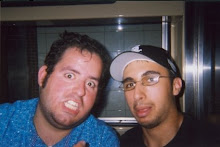Well Bulls fans the "big" trade has arrived ... and no Amare Stoudemire won't be showcased on a big poster off the Kennedy Expressway.
Instead, the Bulls acquired Brad Miller and John Salmons from the Sacramento Kings in exchange for Andres Nocioni, Drew Gooden, Cedric Simmons and Michael Ruffin.
So what exactly does this trade accomplish? A lot more than meets the eye. The Bulls finally find the help they have so desperately needed at center with Miller, who can still be expected to post double-doubles on a semi regular basis. Salmons, a guard/forward who was being heavily pursued by western conference contenders, gives the Bulls some scoring punch off the bench.
So not only will Derrick Rose have a big man who can shoot off the pick and roll, but he'll also have a backcourt mate who can slash to the basket and finish. Teams will have to honor that more as apposed to focusing solely on stopping Rose.
In the bigger picture though, it frees up money for the Bulls. Miller will be one of a myriad of free agents after the 2009-2010 season. Salmons is signed through 2010-2011. Shedding Nocioni's remaining 3 years and $21 million allow the Bulls to be even bigger players in the 2010 free agent class.
While Nocioni's leadership, toughness, and versatility will be sorely missed, as well as Gooden's scoring and rebounding, the Bulls made out well in this trade, both for now and the future.
With that in mind, the trade deadline is at 2pm Thursday. Larry Hughes anyone?
